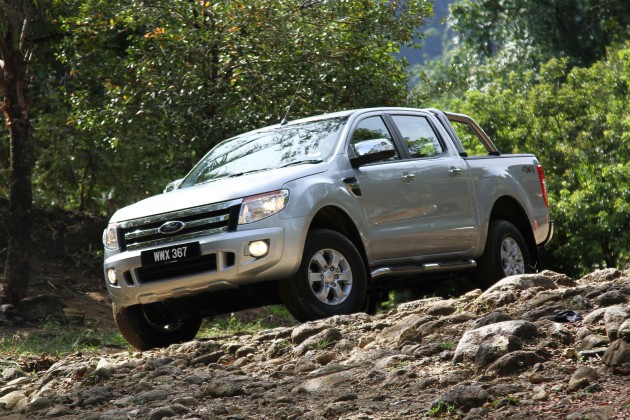
4X4 trucks. They’re big, clunky, smelly, and take up the entire road. And it used to be looked upon as the vehicle for aircon repairmen, plumbers and home renovators. Through the generations, Ford has slowly changed people’s perception towards this workhorse. Now, the just-launched Ford Ranger might just incite another revolution.
Which brings me to the test unit, a Ranger XLT with manual transmission, also the base-spec here in Malaysia. The difference in specification between the automatic and manual transmission models is almost negligible. My test truck does not come with auto rain sensing and an electrochromatic rear view mirror – things that you won’t miss too much. If you want to compare specs, Anthony has covered that extensively in the launch report.
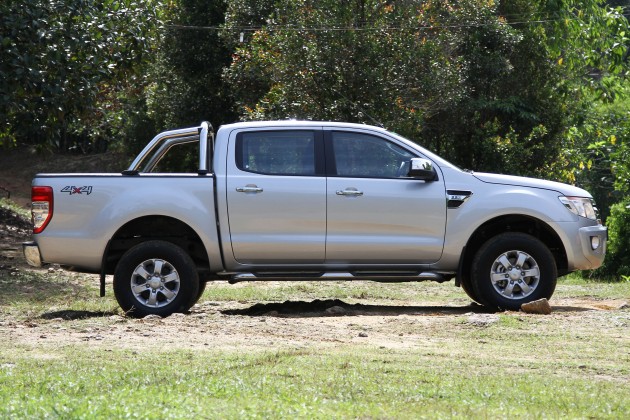
It looks attractively strong, especially when kitted out in WildTrak clothing. It does not mean that the base-spec truck look any less compensated. The grille and bumper depicts a truck with a strong jawline and would readily take any punch squarely on its chin. The wheel arch bulge is reminiscent of an NFL defensive lineman in full gear. In fact, every line and crease on its body adds to its power stance, and they are all functional.
Believe it or not, the wing mirrors’ shape lowers wind noise and the beltline is raised to add more depth to the cargo bed. Even aerodynamics is taken into consideration; any holes that can be closed without affecting performance are sealed off.
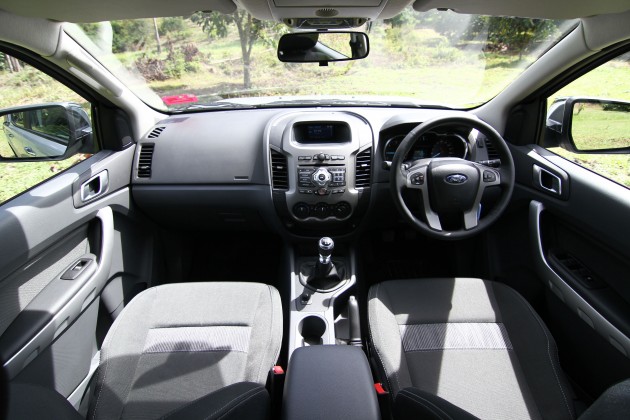
Jump inside and you can be forgiven for thinking you’re not in a made-for-the-rough 4X4. The atmosphere in here is close to that of an SUV or even a sedan. True that the hardy plastics do not give off that luxury vibe, still the texture chosen for the instrument panel cheats perception quite well.
If you’ve been inside any of the new generation Fords, you’ll find yourself in familiar territory. Yes, the interior design is nicely done. The centre console’s inspiration comes from modern gadgets like mobile phones and computers, and the meter cluster’s design is derived from Casio’s G-Shock watches.
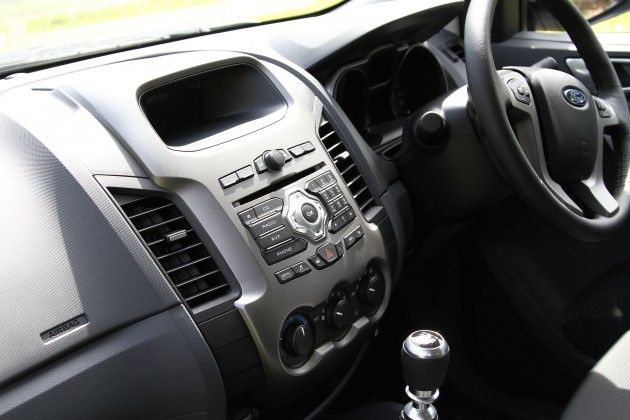
The let down here is the feel of the buttons and dials. Both lacked the sensation of quality – the button presses are vague and the knobs turn without much impedance. Still, you’ll be hard pressed to find filler-buttons in here, which is something that can be found in cars more expensive than this truck. Also, the fit and finish is commendable, everything is aligned and squared away nicely.
And then, there’s the stereo system. Nothing fancy, just a simple six-speaker system that is average at best. There’s a basic equalizer that allows you to tweak the sound, trebles are fine but bass lacks thump. Adding more will only result in unpleasant vibrations reverberating in the cabin; it’s not a pleasant thing to hear.
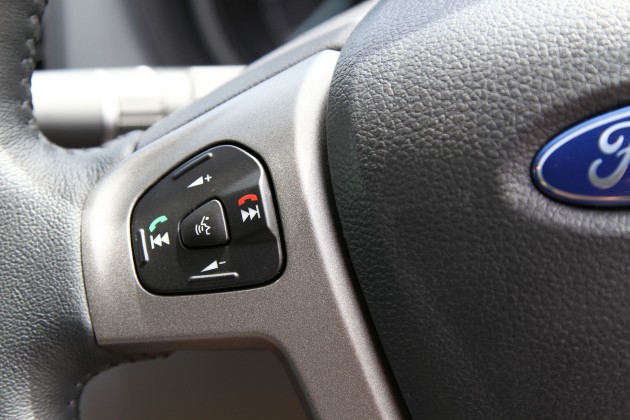
The speakers are hooked up to a multimedia unit that plays music in most digital formats. It will also allow you to sync with your phone via Bluetooth, which also makes it voice controllable too. So you’ll be able to dial and select songs in your phone with your voice instead of pressing buttons on the centre console.
You won’t spot them all but the Ranger’s interior sports over 20 storage areas. I only managed to find ten. Unfortunately, none of them can truly hide a laptop-sized backpack safely away from potential prying eyes. The glove box can swallow a 15-inch laptop whole, but there’s no excuse for leaving behind the laptop in a vehicle. That’s dumb. There is a huge cargo hold at the back, which measures 1,549 mm long, 1,560 mm wide and 511 mm deep. Even that is open to the world and just so you know, the test truck’s tailgate does not come with a lock.
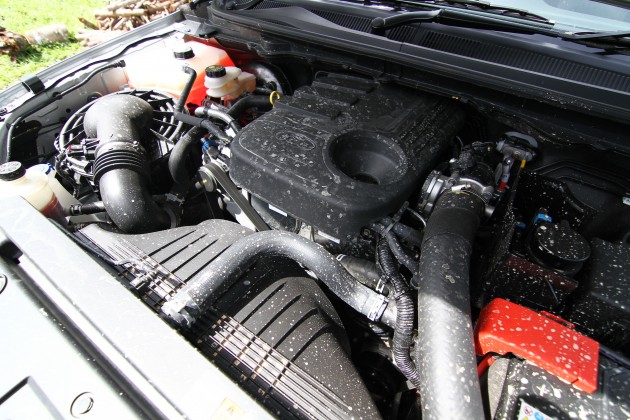
Pulling all that weight (the truck tips the scales at 1,997 kg) is a 2.2 litre TDCi engine that produces 150 PS at 3,700 rpm and 375 Nm of torque between 1,500 to 2,500 rpm. On paper, the engine delivers a fuel economy of 8.1 l/100 km. I only managed a high 10.5 l/100km, although it must be said that my driving style isn’t optimum for efficiency. By the way, the 4X4 can carry 80 litres of diesel in its tank; can someone please do the math?
The engine in this test unit is tacked to a six-speed manual gearbox. The first gear puts down a lot of torque to get the truck moving but you’ll shift up too quickly. It is from the second gear upwards that the Ranger puts down any meaningful speed. The sixth is mainly the overdrive gear that encourages the engine to run on lower revs at high speed, mostly to save fuel.

While gear changes feel mechanical and the clutch feels nice and light, trying to balance on an incline can be a difficult task especially in traffic. It is in similar situations that I found myself starting off from second gear rather than first so the truck crawls instead of jumps uphill.
Ford did not reveal the acceleration times nor top speed. Doesn’t really matter, the 4X4 was not made for lighting quick acceleration. However, it goes fast rather well. At ticket-attracting speeds, the Ranger feels planted on the tarmac and unshakable enough to withstand crosswinds.
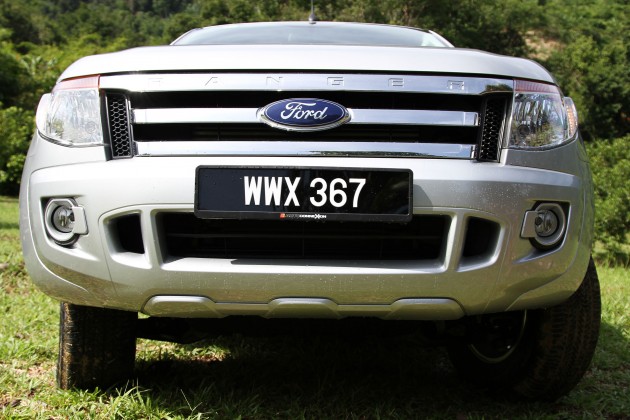
Speaking of winds, the sound of it is quite muted. The purpose-shaped wing mirrors do work. Also lacking is the roar of the engine invading the interior. OK, I exaggerate, but there’s very little offensive noises leaking into the cabin, which should increase the levels of comfort in here.
Yet, there’s little comfort to be had. The culprit is the spring and dampers, which is set too firm for my liking. In urban areas, the 4X4 is less than spectacular. The ride is rough and hard, and the truck has the tendency to crash into the slightest of holes. It will make the typical Malaysian highway feel like you’re off the road.
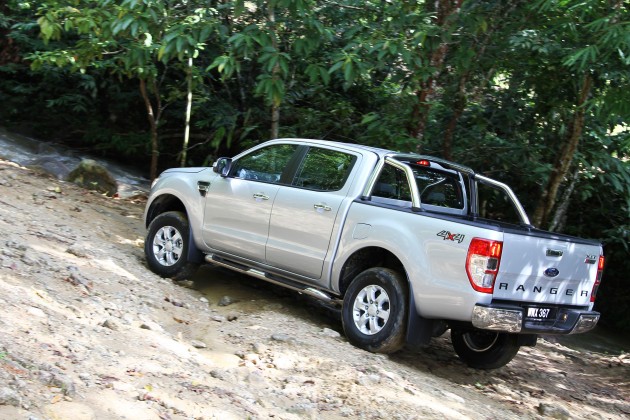
However, it is on the proper off-roading that I appreciate the firm suspension. The Ranger does not have the tendency to feel bouncy after landing from a launch off a ditch. Instead, the Ranger lands, finds grip and continues the journey. The truck is tough enough to go through most of what Mother Nature throws at it. Unless the ground is muddy, damp or wet.
The letdown is the stock tyres that have difficulty in finding any purchase on wet rocks or mud. Not that the supplied Bridgestone Duelers are rubbish, just that tracking through deep jungle calls for more extreme rubber with deeper threads.
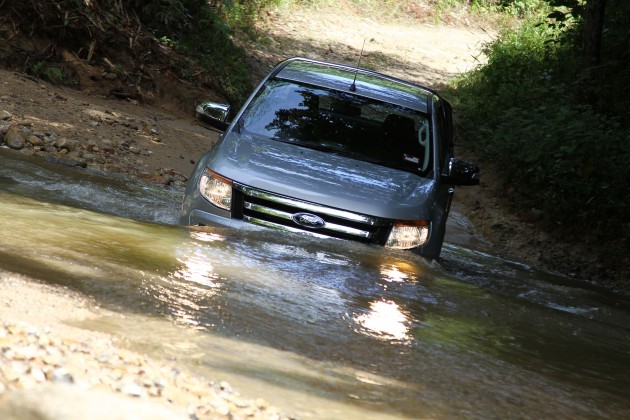
At least the steering has plenty of chatter. On the tarmac, it lets you know where the wheels are pointing towards and does not demand for an extra twist just to make the corner. Off-road, the steering lets you know what you are rolling over and if the wheel still have any remaining grip.
In the river, well, things become complicated. Dunk the Ranger into the water and the steering loses contact with the rest of the truck, effectively making you rely solely on faith. You’ll doubt if the truck’s tyres are on the riverbed or at the mercy of the current. The only assurance you’ll have is the closing distance between yourself and the riverbank.
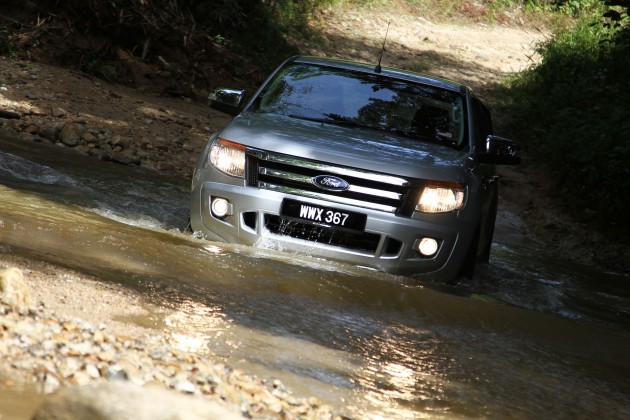
The one thing that Ford kept telling us is the Ranger’s wading depth, which is 800 mm. At its deepest, the river in question had a depth of about 700 mm, 100 short of the magic number. The fact that I am writing this review means that the truck managed to swim and not sink. With that said, don’t let the truck stand still in the river, water will eventually find its way into the cabin.
Throughout the test, there is one thing that the Ranger performed consistantly. In my opinion, it is how well this truck controls pitch and yaw. The snout stays relatively pointed straight and the body did not get anywhere near the floor. Even when I attempt to upset the balance, the 4X4 keeps itself honest. The boffins at Ford have done a marvelous job with this vehicle’s dynamics.
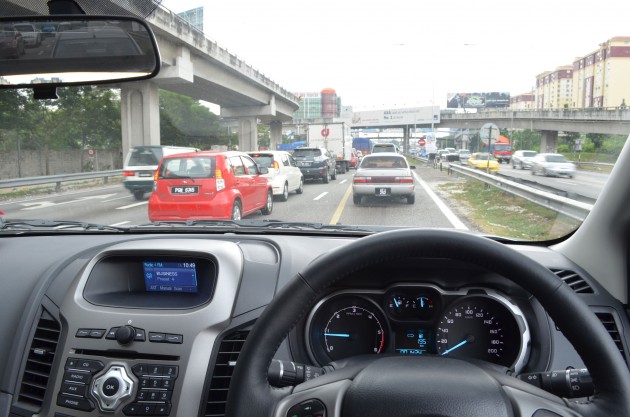
Out of curiosity, mostly to see if I could live with a truck, I drive into an underground parking of a mall in KL. At 1,815 mm tall, the Ranger fits nicely as most car parks allow vehicles with a maximum height of 2.0 metres, sometimes a little bit more.
However, the Ranger’s stated height does not take into account the additional millimetres that come from the long roof-mounted antenna. It hits the odd low-hanging pipe and signage. No damage done, the antenna is flexible. And yet it is unnerving to hear ‘thuuung’ in intervals coming from the roof of the Ranger.
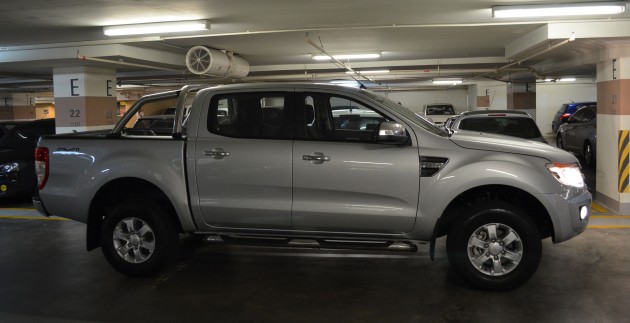
Height aside, the truck navigates through the parking lot easily. Steering was a dab on the heavy side but it was still easy to slither through gaps between pylons. And in spite of the Ranger’s 5,359 mm length, the tail is always where I want it to be – not hitting the columns.
It takes no additional effort or skill to box the truck. The wing mirror is large enough to view the parking lines from high. Do note that objects in the rear view mirror look nearer than it really is. Naturally, the Ranger will never be a perfect fit for the box; either the nose or the tail hangs out.
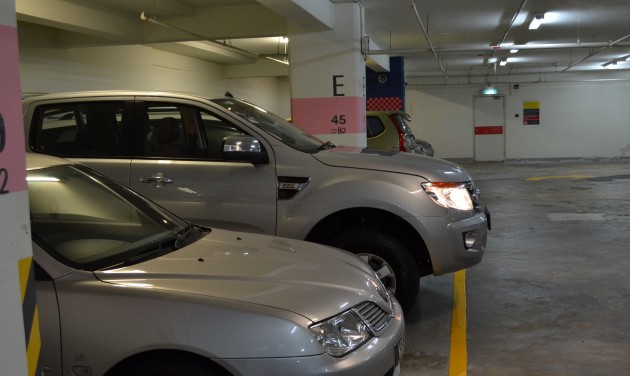
Could I live with a truck? Not quite. I still need a closed boot and a more pliable suspension. And if KL were to be hit with another major flood, I’ll just have to wait it out. No two ways about it.
Still, the Ranger yields its own set of fun. It is a go-anywhere vehicle that, without a doubt, will prove useful in situations that you’ll never think of. If Ford wants to be King of the 4X4 Truck Hill, they have the perfect contender with the Ranger.
http://paultan.org/2012/07/13/tested-ford-ranger-xlt-2-2-manual-driven-in-all-jungles-the-concrete-one-and-the-green-muddy-one/


No comments:
Post a Comment